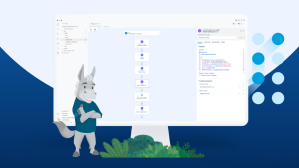Global sales expected to reach $1.12 trillion for 2022 holiday season
Data released alongside 2022 Holiday Insights Hub; tool features up-to-date shopping data and trends
New Salesforce data released today shows that inflation – in the form of skyrocketing retailer costs and increased consumer prices – will play a key role in the 2022 holiday shopping season.
According to the Salesforce Shopping Index, which analyzes global data from more than one billion consumers, online sales will remain essentially flat this holiday. November and December sales are expected to reach $1.12 trillion worldwide and $265 billion in the U.S.
As retailers and suppliers struggle to absorb operating costs, leading to higher prices for consumers, Salesforce forecasts the following for this holiday season:
Overall online spending will remain strong when compared to pre-pandemic
The surge in online spending seen over the last two years will remain strong in 2022, though relatively unchanged compared to last year.
Digital sales will continue to dwarf pre-pandemic levels (up 55% globally and 61% in the U.S. at a 3-year growth rate compared to 2019 sales). However, they’ll remain essentially flat compared to 2021 – decreasing 2% globally and increasing 3% in the U.S.
Increasing prices will mean fewer overall orders
Inflation will tamp down consumer spending worldwide. As global online prices grow 7% compared to 2021 – and 15% compared to 2020 – consumers’ total online orders will drop 7% compared to the 2021 holiday season (5% fewer in the U.S.).
Profit margins will tighten
The increasing costs for suppliers, labor, and transportation will outpace retailers’ ability to pass costs onto customers, putting 10% of profits at risk for retailers and brands, according to the Salesforce analysis.
Inflation will jumpstart holiday shopping early
Inflationary pressure will drive more than four in 10 shoppers (42%) to kickstart holiday shopping earlier than ever this year. Salesforce predicts 29% of holiday sales will occur in the first three weeks of November – before Cyber Week even begins. That’s a 5% increase compared to 2021.
Rumors of an October Prime Day will likely drum up demand and create a halo effect for all retailers, similar to the July event. However, it is unlikely to have a material impact on sales distribution across the full holiday season.
Shoppers will look for sustainable products
The majority of consumers, six out of 10, say they will look for sustainable products and shipping options this holiday season. Despite this strong preference, less than one in four brands and retailers (23%) will promote and offer sustainable options throughout the shopping journey.
The Salesforce perspective: “Retailers are feeling the squeeze from unprecedented margin pressure due to increased labor wages, fuel prices, and inventory carry costs,” said Rob Garf, VP and GM of Retail, Salesforce. “Retailers mustn’t let margin be the Grinch that steals the holiday. It’s critical to contain costs by automating and scaling operations – particularly by streamlining processes and removing friction as consumers increasingly shop across digital and physical touchpoints.”
Go deeper:
- See how inflation will shape retail this holiday season.
- Visit the Holiday Insights Hub for more shopping predictions and analysis.
- View Salesforce’s 2021 holiday season findings here.
- Learn about Salesforce’s new Store Associate App for automated fulfillment here.
2022 Salesforce holiday insights and predictions methodology
Powered by Commerce Cloud, Salesforce analyzed aggregated data to produce holiday insights from the activity of more than one billion global shoppers across more than 61 countries, with a focus on 12 key markets: the U.S., Canada, U.K., Germany, France, Italy, Spain, Japan, the Netherlands, Australia/New Zealand, the Asia-Pacific (excluding Japan, Australia, and New Zealand), and the Nordics. This battery of benchmarks provides a deep look into the last nine quarters and the current state of digital commerce. Several factors are applied to extrapolate macroeconomic figures for the broader retail industry, and these results are not indicative of Salesforce performance.
The prediction data that we present are from proprietary Salesforce research. The calculations we use blend first-party and third-party data, as well as several market assumptions, to generate the data points we present.















